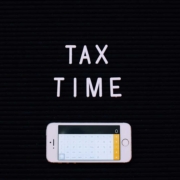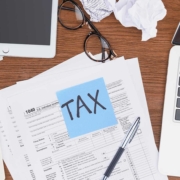In T.D. 9937, the IRS finalized proposed rules addressing the amendments to Sec. 401(c) by Section 13613 of the law known as the Tax Cuts and Jobs Act (TCJA), P.L. 115-97, which provides an extended rollover period for a qualified plan loan offset. The final regulations adopt the proposed regulations issued in August (REG-116475-19) with only one change, delaying the effective date.
Sec. 72(p)(1) provides that if, during any tax year, a participant or beneficiary receives (directly or indirectly) any amount as a loan from a qualified employer plan (defined under Sec. 72(p)(4)(A)), that amount will be treated as having been received by the individual as a distribution from the plan. For certain plan loans, Sec. 72(p)(2) provides an exception to the general treatment of loans as distributions. For this exception to apply, the loan generally must satisfy three requirements:
- The loan’s terms must satisfy the limits on loan amounts under Sec. 72(p)(2)(A) ($50,000);
- The loan must be repayable within five years; and
- The loan must require substantially level amortization over the loan term.
Section 13613 of the TCJA amended Sec. 402(c)(3) to provide an extended rollover deadline for qualified plan loan offset (QPLO) amounts. Any portion of a QPLO amount (up to the entire amount) may be rolled over into an eligible retirement plan by the individual’s tax filing due date (including extensions) for the tax year in which the offset occurs.
Regs. Sec. 1.402(c)-3 takes into account changes to the QPLO rollover rules. The regulation confirms that a QPLO is a type of plan loan offset; accordingly, most of the general rules relating to plan loan offset amounts apply to QPLO amounts. In addition, the rules in Regs. Sec. 1.401(a)(31)-1, Q&A-16 (which explains the offering of a direct rollover of a plan loan offset amount), and Regs. Sec. 31.3405(c)-1, Q&A-11 (which contains special withholding rules for plan loan offset amounts), that apply to plan loan offset amounts in general also apply to QPLO amounts. The final regulations provide examples to illustrate the interaction of the special rules for QPLOs with the general rules for plan loan offsets.
Consistent with Regs. Sec. 1.402(c)-2, Q&A-9, the final regulations provide that a distribution of a plan loan offset amount that is an eligible rollover distribution and not a QPLO amount may be rolled over by the employee (or spousal distributee) to an eligible retirement plan within the 60-day period set forth in Sec. 402(c)(3)(A).
Consistent with the Sec. 402(c)(3)(C) amendments, the final regulations provide that a distribution of a plan loan offset amount that is an eligible rollover distribution and a QPLO amount may be rolled over by the employee (or spousal distributee) to an eligible retirement plan through the period ending on the individual’s tax filing due date (including extensions) for the tax year in which the offset is treated as distributed from a qualified employer plan.
A taxpayer with an eligible rollover distribution that is a QPLO amount may roll over any portion of the distribution to an eligible retirement plan, including another qualified retirement plan (if that plan permits rollovers) or an IRA, by the taxpayer’s deadline for filing income taxes for the year of the distribution, including extensions.
The final regulations also contain definitions of plan loan offset amount, QPLO amount, and qualified employer plan, and special rules for QPLO determinations when a severance from employment has occurred.
In finalizing the proposed regulations, the IRS agreed with part of the comment it received from the only commenter to delay the effective date of the regulations to give plan administrators and taxpayers more time to comply.
Therefore, these regulations apply to plan loan offset amounts, including qualified plan loan offset amounts, treated as distributed on or after Jan. 1, 2021. As a result, the rules in Regs. Sec. 1.402(c)-3 will first apply to a 2021 Form 1099-R, Distributions From Pensions, Annuities, Retirement or Profit-Sharing Plans, IRAs, Insurance Contracts, etc., which is required to be filed and furnished in 2022.
Taxpayers (including a Form 1099-R filer) may also apply these regulations to plan loan offset amounts, including QPLO amounts, treated as distributed on or after Aug. 20, 2020, the date the proposed regulations were issued.
— Sally P. Schreiber, J.D., (Sally.Schreiber@aicpa-cima.com) is a Tax Adviser senior editor.











